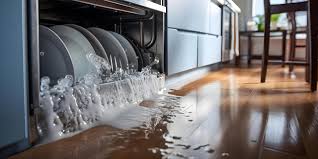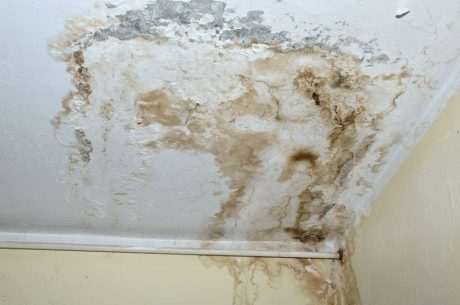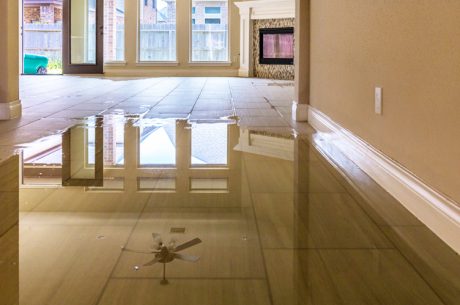Table of Contents
Water damage doesn’t just hit your wallet; it can also compromise the safety and longevity of your property. Strategic water damage mitigation techniques are essential for homeowners and property managers looking to avoid the unexpected costs and headaches that water damage can bring. In this article, we’ll break down actionable steps you can take to prevent water damage, respond quickly if it occurs, and invest in long-term solutions to keep your property safe and sound.
Identifying Key Risks of Water Damage
Water damage comes from a variety of sources, some of which are more common than others. By recognizing potential risk factors, you can better protect your property.
Common Sources of Water Damage
- Plumbing Issues: Over time, even minor plumbing issues can escalate, leading to significant water damage. Pipes can burst, fittings can fail, and small leaks can grow if left unchecked.
- Roof Vulnerabilities: Harsh weather, wear and tear, and physical damage can compromise a roof, allowing rainwater to seep inside and damage ceilings and walls.
- Groundwater Intrusion: Poor landscaping or drainage systems can cause water to accumulate around your home, putting pressure on the foundation and leading to water intrusion.
Types of Water Damage
Each type of water damage requires different prevention and remediation steps:
- Clean Water Damage: Often caused by clean sources like broken water lines or rain. While it’s the least hazardous, it can lead to mold growth if not addressed promptly.
- Grey Water Damage: Comes from sources like dishwashers and washing machines, potentially containing mild contaminants.
- Black Water Damage: This is the most hazardous and involves water from sewage or floodwater, requiring immediate professional cleanup.
Early Prevention and Detection Tactics
Preventing water damage is all about early detection and addressing small issues before they become large, expensive problems.
Advantages of Early Detection
Early detection helps you avoid costly repairs. When you catch small leaks and other minor issues, you can act before mold growth or structural damage occurs, saving both time and money.
Tools and Methods for Identifying Leaks
- Moisture Meters: These handy devices can detect hidden moisture in walls, floors, and ceilings.
- Leak Detection Devices: Modern leak detectors can alert you via smartphone when there’s a leak, allowing you to act immediately.
Effective Strategies to Address Water Damage Sources
A proactive approach to maintaining critical areas of your home can prevent water damage from happening in the first place.
Regular Plumbing Maintenance
Stay on top of plumbing issues to prevent unexpected damage. Fix leaks immediately and insulate exposed pipes during colder months to avoid freezing and bursting.
Roof and Gutter Upkeep
Regular roof inspections are essential. Clear out gutters, check for broken or missing shingles, and ensure water flows away from the roof and walls. After storms, check for signs of damage to avoid leaks that can go undetected.
Landscaping and Drainage Improvements
Direct water away from your property’s foundation by grading your landscape and installing drainage systems like French drains. This prevents water from pooling around your home, which can lead to water damage in basements and lower levels.
Optimizing Indoor Air Flow and Humidity Control
Proper airflow and humidity control can prevent water-related problems inside your home.
Controlling Indoor Humidity Levels
High humidity contributes to mold and mildew growth. Keep humidity levels under control by using dehumidifiers, especially in basements, and ensure your HVAC system is well-maintained for optimal airflow.
Ventilation for Moisture-Prone Areas
Installing and maintaining exhaust fans in kitchens and bathrooms helps reduce moisture buildup. Run the fans when cooking, showering, or any time high moisture is present to prevent condensation that leads to mold growth.
Immediate Action After Water Damage Occurs
If water damage occurs, acting fast is crucial. Here’s what to do.
Why Timing Matters in Water Damage Response
Water damage worsens over time. Acting within 24 hours helps you avoid mold growth, warping, and other severe damage that can quickly add up in repair costs.
Key Steps When Water Damage is Detected
- Shut Off Water Supply: Stop further damage by turning off the main water line.
- Remove Excess Water: Use a wet/dry vacuum or towels to remove standing water.
- Call Restoration Professionals: A professional can assess and remediate water damage thoroughly, ensuring all moisture is eliminated.
Long-Term Solutions for Water Damage Prevention
These long-term strategies help you prevent water damage and maintain your property.
Investing in Water-Resistant Materials
For areas prone to water exposure, choose materials like tile for flooring or moisture-resistant drywall. These materials withstand humidity and occasional spills better than traditional materials.
Scheduling Professional Inspections Regularly
Regular inspections can reveal hidden vulnerabilities in your home. Seasonal inspections are especially useful, as they help identify damage that might have occurred due to weather changes or other factors.
Professional Water Damage Restoration Services
In severe cases, water damage restoration specialists offer the best chance of complete recovery.
Benefits of Hiring a Specialist
Professionals use specialized tools to extract water, dry the area, and prevent mold growth. With their expertise, you can rest assured that hidden water damage is thoroughly addressed.
Conclusion
Taking a proactive approach to water damage mitigation can save you from hefty repair bills and extensive repairs. Regular maintenance, early detection, and professional help are the key elements of effective water damage prevention. By staying vigilant and addressing minor issues as they arise, you’re protecting both your property and your wallet.
FAQs
- What are the first signs of water damage?
- Discoloration on walls, a musty odor, and pooling water are common early indicators.
- How do I choose the right water-resistant materials?
- Choose materials designed to withstand humidity and moisture, like tile flooring or moisture-resistant drywall, especially for bathrooms and basements.
- Is professional water restoration worth it?
- Yes, professionals ensure thorough drying and remediation, which can prevent further damage and mold.
- How often should gutters and drains be checked?
- It’s recommended to inspect gutters seasonally, especially after heavy rainfall, to keep water flowing away from your property.
- What’s the best way to handle a burst pipe?
- Turn off the water supply immediately, mop up excess water, and contact a plumber or water restoration professional to prevent further damage.




 PuroClean Restoration Specialists
PuroClean Restoration Specialists